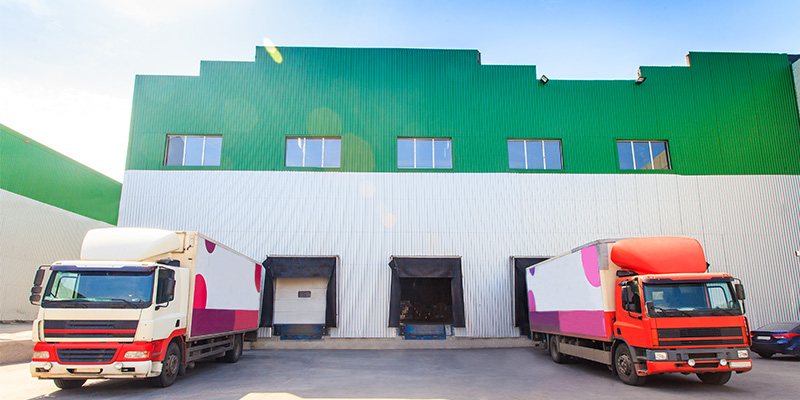Given the explosion in new construction, the important role of Class B (and even C) industrial properties is often overlooked – especially those under 100,000 square feet. These buildings remain a functional and economic solution to a wide range of companies, even without most modern efficiencies.
At I.CON East this week in Jersey City, New Jersey, Jim Scott, principal at Avison Young, moderated a panel that included Nick Aileo, director of acquisitions for Wharton Equity Partners; Itay Ron, senior vice president for Northeast markets at Faropoint; and Stefan Sansone, director at Bridge Industrial.
He started by sharing fundamentals for Class B properties, which account for 8.5 billion square feet or 70% of all U.S. inventory. Class B properties have the lowest vacancy rates by asset class, with much less volatility than Class A properties, and have seen continued rent growth, with a narrowing spread compared to Class A properties, Scott shared.
He asked the panel how they define Class B properties – do you have any metrics, or is it entirely subjective?
“I look at Class B as a function of the age of the building, [with] mid-20-foot clear height and under, a truck court that’s not as wide, is older but functional or could be made functional,” said Aileo.
Sansone emphasized the importance of location, and Ron pointed out that what defines Class B can vary by market. Some properties in the Philadelphia area, for example, are much older than those in newer markets, so going by age alone doesn’t give the full picture.
“When acquiring an older asset, how do you find balance, the appropriate level of improvements?” posed Scott.
“The smaller the size, the more ready to go you want it to be,” said Ron. “The smaller the tenant, the less vision they have; they like to sign a lease now and occupy by the end of the month.”
Sansone said it’s important to identify the major ticket items – roof, floor – and their current condition to put together the full scope of work early on.
“We’ve got a certain checkbox for these buildings too,” Aileo agreed, saying that the push-and-pull becomes, “What do we do on spec? Do we wait and see? How much do we spend out of pocket?”
“How do you handle the human side of the transaction when working with tenants who may be facing a two-fold increase in their lease rates?” Scott posed to the panel.
“It’s tough… we buy buildings with suppressed rents by design,” said Ron. Some tenants haven’t been on the market looking for space for 10-15 years. “When they hear their rent is increasing twofold, they might throw their hands up in the air, but when they get a broker and go look at market rates, they see that’s the reality. It’s the nature of a booming market.”
“Sometimes you can tell they think we’re the ‘big bad guys’ from New York City buying their property, so it’s a tough conversation to have. They’ve been doing decades of handshake deals,” said Aileo. “We’re fortunate rents have spiked dramatically – well above what you’d put in your pro forma in 2020 and 2021. It’s a balancing act.” He added that when it comes down to it, they’d prefer to negotiate on rent to keep occupancy.
Municipalities are also getting wise as to how much money is being made on industrial properties – and taxes are increasing accordingly – so communicating what those expenses will be early on, escrowing in advance can go a long way.
“On an asset sale, what amount of spread do you anticipate between Class A and B product?” Scott asked.
“This is a tough question,” said Sansone. “Sometimes as tight as 25 bps [basis points] up to 75 bps. The sweet spot is 50-75 bps over [Class] A is how we look at it.”
“The institutions have gotten very stringent with what exit cap they’re going to underwrite,” Aileo added. Are they open to investing in class B properties?
“I would argue that large institutions want access to Class B, they just don’t have the manpower to dig through hundreds of warehouses,” said Ron. “The whole premise to our business is we streamline things and sell it as part of a portfolio.”
There’s been a dramatic decrease in the number of new construction starts, Scott pointed out. With fewer opportunities to deploy capital at the same levels from the past several years, he asked the group if they think any of that will shift to older, value-add funds focused on Class B product.
One of the most ambiguous lines is between different types of investments like core-plus, value-add or opportunistic, Ron said. “But people need to get money out the door, so if they see the fundamentals, they’ll chase those deals.”
Aileo agreed. “Everyone’s antsy to buy – there’s a ton of capital ready to get out the door. It’s definitely easier to underwrite than a few months ago, and there’s also more competition with more groups piling into Class B.”
In closing, Scott asked the group: Are you net buyers or net sellers this year?
“Buyers,” said Sansone. “We’ve raised a significant size value-add fund we’re going to deploy.”
Ron: “We raised almost a billion in equity – we are buyers for sure.”
“Buyers,” agreed Aileo. “We’re finalizing a couple deals in our existing high net worth fund. I think there are good tailwinds on industrial despite how choppy the past few years have been. Full steam ahead on the buy side.”

This post is brought to you by JLL, the social media and conference blog sponsor of NAIOP’s I.CON East 2024. Learn more about JLL at www.us.jll.com or








